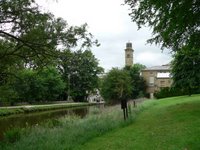 Well I've seen many things in 17 years of goat farming, but yesterday was the first time I had seen an anaphylactic reaction in a goat.
Well I've seen many things in 17 years of goat farming, but yesterday was the first time I had seen an anaphylactic reaction in a goat.Well, that was my estimation of what it was and I'm not a vet - so if anyone can correct me please do so.
The goat was in poor condition and as we are in a cobalt and selenium deficient area here in Western Australia, I gave her a vaccine of 3 in 1 with selenium and a 4 ml injection of B12.
I administered the injections subcutaneously.
Within about 5 minutes of the injection, the goat was hyperventilating (rapid breathing, her mouth was open, her tongue looked bluish and thick.
In all the reaction probably lasted between 7 - 10 minutes.
My assumption was that she had suffered an acute allergic reaction to one of the injections - most likely the B12 as I had exceeded the recommended dosage.
My immediate worry was that the reaction was causing her throat and tongue tissues to swell and her airways to tighten, as in a penicillin reaction or asthma attack.
My only thought for a solution was to give her some Ventolin by inhaler.
I administered four of five puffs into her mouth though I think most got blown out with her rapid puffing.
Whether my home-grown diagnosis was right or whether the home-grown treatment helped or hindered, I don't know.
If anyone can advise me, I'd be pleased to receive your comments.
What I do know is that the doe in question is alive and feeding today and no worse for her 'funny turn'.
Photo: M Muir - Pink and grey galah feeding on acasia in garden

















